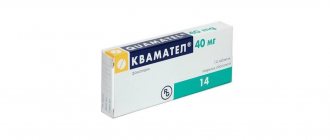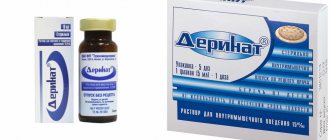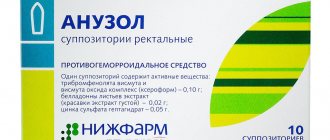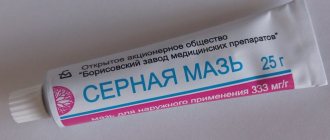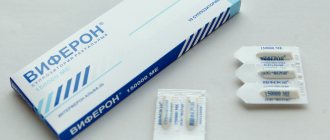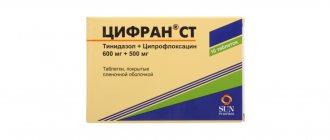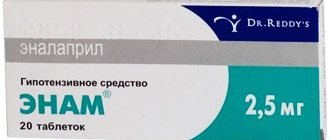Treatment for colds, flu and other infections is especially effective if started as quickly as possible. For a quick recovery, antiviral drugs are used, for example, Anaferon. This medicine is suitable for both children and adults. You can buy it without a prescription at a very affordable price.
"Anaferon": composition, description
"Anaferon" is an antiviral drug that contains antibodies to interferon. They are a combination of several active components. Additional compounds - lactose, magnesium in the form of stearate and others. The drug is produced in the form of tablets - 20 pcs. in one package.
The medicine is used mainly to treat influenza and other acute respiratory viral infections. the active components have an immunomodulatory and antiviral effect. They lead to an increase in antibody synthesis, resulting in the formation of interferon. Thanks to this, the activity of individual cells of the immune system increases, which facilitates quick and easy recovery from viral infections.
The drug is also used to relieve symptoms of intoxication, which often accompany respiratory pathologies. The use of the drug is also justified in the presence of bacterial infections, to prevent the risk of superinfections. "Anaferon" is sometimes used together with anti-inflammatory and antipyretic drugs. Then their dosage can be reduced.
Store the drug in normal room conditions at temperatures up to 25 degrees Celsius and low humidity. Access to sunlight is excluded. It should also be kept away from children. The shelf life of the tablets is 3 years from the date of production.
ANAFERON
Compound:
Active ingredient: 1 tablet contains affinity-purified antibodies to human interferon gamma: a mixture of homeopathic dilutions C12, C30 and C200 - 3 mg;
Excipients: lactose, microcrystalline cellulose, magnesium stearate.
Dosage form. Pills.
Basic physical and chemical properties:
Tablets are flat-cylindrical, scored and chamfered, from white to almost white. On one flat side with a notch there is the inscription MATERIA MEDICA, on the other flat side there is the inscription ANAFERON.
Pharmacological group. Homeopathic medicine.
Pharmacological properties.
The drug is used for the treatment and prevention of acute respiratory viral infections and influenza. When used prophylactically and therapeutically, it has an antiviral effect. Experimentally and clinically proven effectiveness against influenza viruses, parainfluenza, herpes simplex viruses types 1 and 2 (labial herpes, genital herpes), other herpes viruses (varicella, infectious mononucleosis), enteroviruses, tick-borne encephalitis virus, rotavirus, coronavirus, calicivirus, adenovirus , respiratory syncytial virus (RS virus). The drug reduces the concentration of the virus in the affected tissues, acts on the system of endogenous interferons and associated cytokines, induces the formation of endogenous “early” interferons (IFN α/β) and γ-interferon (γ-IFN).
Has antimutagenic properties.
Clinical characteristics.
Indications.
Prevention and treatment of acute respiratory viral infections (including influenza).
Complex therapy of infections caused by herpes viruses (infectious mononucleosis, chicken pox, labial herpes, genital herpes).
Complex therapy and prevention of relapses of chronic herpesvirus infection, including labial and genital herpes.
Complex therapy and prevention of other acute and chronic viral infections caused by tick-borne encephalitis virus, enterovirus, rotavirus, coronavirus, calicivirus.
Complex therapy of secondary immunodeficiency states of various etiologies, including prevention and treatment of complications of viral and bacterial infections.
Contraindications.
Hypersensitivity to the components of the drug.
Interaction with other drugs and other types of interactions.
There are no cases of incompatibility with other drugs.
If necessary, the drug can be used in conjunction with other antiviral, antibacterial and symptomatic agents.
Features of application.
The drug contains lactose, and therefore is not recommended for use in patients with congenital galactosemia, glucose malabsorption syndrome, or congenital lactase deficiency.
Use during pregnancy or breastfeeding.
There are no data on the effectiveness and safety of the drug during pregnancy and lactation, so it should not be prescribed during these periods.
The ability to influence the reaction rate when driving a vehicle or working with other mechanisms.
Does not affect reaction speed when driving vehicles or operating other mechanisms.
Method of administration and dose.
The drug is taken orally, 1 tablet 30 minutes before or 30 minutes after a meal. Keep the tablet in your mouth (preferably without chewing or swallowing) until completely dissolved.
ARVI, influenza, intestinal infections, herpesvirus infections, neuroinfections.
Treatment should begin as early as possible when the first signs of an acute viral infection appear according to the following scheme: for the first 2 hours the drug is taken every 30 minutes (5 doses), then during the first 24 hours - another 3 tablets at regular intervals (a total of 8 tablets during the first days). Starting from the 2nd day and thereafter, the drug is taken 1 tablet 3 times a day until complete recovery.
If there is no improvement on the third day of treatment for acute respiratory viral infections and influenza, you should consult a doctor.
For prevention, take 1 tablet once a day for 1-3 months (during the entire epidemic season).
Genital herpes. For acute manifestations of genital herpes, take at regular intervals according to the following scheme: 1-3 days - 1 tablet 8 times a day, then - 1 tablet 4 times a day for at least 3 weeks.
To prevent relapses of chronic herpesvirus infection - 1 tablet per day. The recommended duration of the preventive course is determined individually and can reach 6 months.
When using the drug for the treatment and prevention of immunodeficiency conditions - 1 tablet per day.
Children.
Do not use in children.
Overdose.
No cases of overdose have been reported. In case of accidental overdose, dyspepsia may occur due to the constituents of the drug.
Adverse reactions.
Allergic reactions are possible, including itching, rash, urticaria, skin flushing and swelling, and difficulty swallowing.
Best before date.
3 years.
Do not use after the expiration date stated on the packaging.
Storage conditions.
Store at a temperature not exceeding 25 °C.
Keep out of the reach of children.
Package.
20 tablets in a blister made of polyvinyl chloride film and aluminum foil.
1 blister along with instructions for use in a cardboard box.
Vacation category.
Over the counter.
Manufacturer.
LLC "NPF" Materia Medica Holding ".
The location of the manufacturer and its address of place of business.
Legal address:
Russian Federation, 127473, Moscow, 3rd Samotechny lane, no. 9;
Production area:
Russian Federation, 454139, Chelyabinsk, st. Buguruslansky, 54.
Applicant.
LLC Materia Medica-Ukraine.
Applicant's location.
Ukraine, 03062, Kyiv, st. Nevskaya, 20,
Tel.: +380 (44) 400-90-78.
Indications for use
The drug is used to treat infectious pathologies, including:
- flu;
- ARVI;
- for the prevention of colds;
- herpetic disease;
- cytomegalovirus type infection (chronic form);
- prevention and treatment of immunodeficiency;
- bacterial, mixed infection (in this case, Anaferon is used as an additional remedy).
The product has a general stimulating effect on the immune system, so it should be used by those patients who have problems with the immune system. The drug is also prescribed for the prevention of diseases, which is especially important for workers who regularly stay in crowded places.
Contraindications and side effects
"Anaferon" can be used by almost all patients, with the exception of a few cases:
- pregnancy period (all trimesters);
- breastfeeding period;
- intolerance to one or more active ingredients;
- congenital galactosemia;
- glucose malabsorption;
- lactase deficiency of congenital type.
It is possible to develop side effects - allergic reactions. However, they appear infrequently - generally the treatment proceeds well.
Instructions for use "Anaferon"
The drug is used by both adults and children. Adult patients place one tablet under the tongue and dissolve until completely dissolved. Reception is carried out from 3 to 6 times a day, depending on the stage of development of the infection. After normalization of well-being, the drug is used for another 8 to 10 days in a row, but 1 tablet per day.
The children's form of the drug is used 1 pc. per day for a month. In this case, a repeated course can be planned only after a break of 1 month in agreement with the doctor.
If the remedy is used for a tick bite to prevent the development of encephalitis, it is enough to take 1 tablet 3 times a day for 3 weeks (even if there are no corresponding symptoms).
The dosage regimen is determined by the doctor. As a rule, the product is used 1 tablet every 30 minutes (during the first 3 hours). Then, after taking 5 tablets, take 3 tablets per day at equal time intervals.
If you follow the described recommendations, Anaferon does not pose a threat to life or health. No cases of overdose have been registered. However, if allergic reactions begin to appear, you need to stop taking it and consult a specialist.
Instructions for use Anaferon adult
Compound:
Active ingredient:
Antibodies to human interferon gamma, affinity purified - 0.003 g*
Excipients:
lactose monohydrate 0.267 g,
microcrystalline cellulose 0.03 g,
magnesium stearate 0.003 g.
* applied to lactose monohydrate in the form of a water-alcohol mixture containing no more than 10-15 ng/g of the active form of the active substance.
Description
Tablets are flat-cylindrical, scored and chamfered, from white to almost white. On the flat side with a mark there is the inscription MATERIA MEDICA, on the other flat side there is the inscription ANAFERON.
Pharmacotherapeutic group
Antiviral and immunostimulating agent
ATX code
L03AX
pharmachologic effect
When used prophylactically and therapeutically, the drug has an immunomodulatory and antiviral effect. It has been experimentally and clinically proven effective against influenza viruses and herpes simplex viruses types 1 and 2 (labial herpes, genital herpes). The drug reduces the concentration of the virus in the affected tissues, affects the system of endogenous interferons and associated cytokines, induces the formation of endogenous “early” interferons (IFN-a/β) and gamma interferon (IFN-γ).
Stimulates the humoral and cellular immune response. Increases the production of antibodies (including secretory IgA), activates the functions of T-effectors, T-helpers (Tx), normalizes their ratio. Increases the functional reserve of Tx and other cells involved in the immune response. It is an inducer of a mixed Tx1- and Th2-type immune response: it increases the production of Tx1 (IFN-γ, IL-2) and Th2 (IL-4, -10) cytokines, normalizes (modulates) the balance of Th1/Th2 activities. Increases the functional activity of phagocytes and natural killer cells (EK cells).
Pharmacokinetics
The sensitivity of modern physicochemical methods of analysis (gas-liquid chromatography, high-performance liquid chromatography, gas chromatography-mass spectrometry) does not allow assessing the content of the active substance of the drug Anaferon in biological fluids, organs and tissues, which makes it technically impossible to study pharmacokinetics.
Indications for use
Anaferon is indicated for use in adults.
Treatment and prevention of influenza and acute respiratory viral infections (ARVI) as part of complex therapy.
Complex treatment of newly diagnosed and recurrent herpes of the lips and genital herpes.
Contraindications
Increased individual sensitivity to the components of the drug. Age up to 18 years.
Lactase deficiency, lactose intolerance, glucose-galactose malabsorption.
Pregnancy and lactation
The safety of Anaferon in pregnant women and during lactation has not been studied. If it is necessary to take the drug, the benefit-risk ratio should be taken into account.
Directions for use and doses
The score is not intended to divide the tablet into parts.
Inside, not during meals. Keep the tablet in your mouth until completely dissolved.
ARVI, flu, herpes of the lips.
On the 1st day of treatment, take 8 tablets according to the following scheme: 1 tablet every 30 minutes in the first 2 hours (total 5 tablets in 2 hours), then during the same day take another 1 tablet 3 times at equal intervals. On the 2nd day and further, take 1 tablet 3 times a day until complete recovery.
If there is no improvement on the third day of treatment with the drug for acute respiratory viral infections and influenza, you should consult a doctor. During the epidemic season of acute respiratory viral infections and influenza, the drug is taken daily for prophylactic purposes, once a day for 1-3 months.
Genital herpes.
For acute manifestations of genital herpes, the drug is taken at regular intervals according to the following scheme: days 1-3 - 1 tablet 8 times a day, then 1 tablet 4 times a day - for at least 3 weeks.
To prevent relapses of chronic herpesvirus infection - 1 tablet per day. The recommended duration of the preventive course is determined individually and can reach 6 months.
If necessary, the drug can be combined with other antiviral and symptomatic agents.
Side effect
Allergic reactions and manifestations of increased individual sensitivity to the components of the drug are possible.
Overdose
No cases of overdose have been reported to date. In case of accidental overdose, dyspepsia may occur due to the excipients included in the drug.
Interaction with other drugs
No cases of incompatibility with other drugs have been identified to date. If necessary, the drug can be combined with other antiviral, antibacterial and symptomatic agents.
special instructions
The drug contains lactose monohydrate, and therefore is not recommended for use in patients with congenital galactosemia, glucose malabsorption syndrome, or congenital lactase deficiency.
Release form
Lozenges. 20 tablets each in a blister pack made of polyvinyl chloride film and aluminum foil. 1, 2 or 5 blister packs together with instructions for medical use are placed in a cardboard pack.
1, 2 or 5 blister packs together with instructions for medical use are placed in a cardboard pack.
Storage conditions
At a temperature not higher than 25 °C. Keep out of the reach of children. During the period of use of the drug, store the blister pack in a cardboard box provided by the manufacturer.
Best before date
3 years. Do not use after the expiration date.
Conditions for dispensing from pharmacies
Over the counter.
